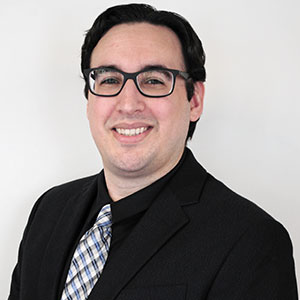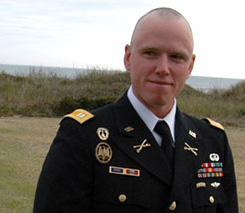Rare Disease Day Shines Light on Mesothelioma
Awareness & ResearchWritten by Amy Edel | Edited By Walter Pacheco

“I like to think of awareness days like Rare Disease Day as beacons shining a light on an incredible community of people working together to solve a terrible and poorly understood cancer,” said registered nurse Sean Marchese, writer and webinar moderator for The Mesothelioma Center.
Every year, communities across the globe join forces in February to raise awareness of rare diseases such as mesothelioma. Rare Disease Day spotlights the impact uncommon illnesses have on many people and highlights ongoing advances in research.
Because mesothelioma is such a rare form of cancer, discussions with doctors about risk factors and the need for screenings don’t always happen. Conversations about mesothelioma often don’t take place until patients present with acute symptoms. Unfortunately, delayed diagnosis and even initial misdiagnosis are common.
Raising awareness of key risk factors for mesothelioma, such as asbestos exposure, can foster critical dialogue between patients and doctors, improving screening and early diagnosis rates. Obtaining a diagnosis as early as possible enables patients to begin mesothelioma treatment sooner, which could help improve their prognosis.
“Rare Disease Day is a chance to highlight the potential that research, fundraising and community awareness have to close the gap toward improving the lives of so many,” Marchese said. “As a health professional and researcher, my heart grows every time someone learns something new about rare illnesses. The best thing we can do to raise awareness is educate each other.”
Raising Awareness Among Veterans
Former U.S. Army Capt. Aaron Munz, director of the Veterans Department at The Mesothelioma Center and a VA-accredited claims agent, noted the important role observances like Rare Disease Day can play.

“Awareness days help veterans that I work with understand the risks from their service that they may not have been aware of,” Munz said.
While veterans who served in all branches of the United States military during the height of asbestos use (1930-1980) were at high risk of exposure to asbestos, active duty personnel can still be harmed by legacy asbestos in old facilities, housing and equipment. Families of service members may also be at risk from secondary exposure and any asbestos that may still be present in military housing.
For those diagnosed with mesothelioma as a result of their military service, there are options.
“The key to qualifying for benefits and connecting with medical experts is early and accurate medical screenings and diagnosis,” Munz explained. “In many cases awareness comes from fellow veterans and educational initiatives that are the first step toward learning about resources that can help.”
Importance of Mesothelioma Screenings
The possibility of being diagnosed with a rare form of cancer can cause fear and anxiety. Having any kind of medical screening or scan can be stressful.

Peritoneal mesothelioma survivor Tamron Little recently wrote about her own experiences with what she called “scanxiety.”
“I remember every time I went to have a scan I would feel nauseous, get sweaty palms and just have an overwhelming feeling of fear,” she shared.
Civil Engineer James Simpson, who actively participated in rescue and recovery efforts at Ground Zero after 9/11, shared his personal experience with The Mesothelioma Center. He noted that he’s well aware of the risks recovery workers, volunteers and first responders such as firefighters face because of exposure to asbestos and other contaminants at the World Trade Center site. He knows others he worked with there who have faced serious diagnoses since.
“As you get older you start to think, when will health problems from being down there for so long begin? Every year when I go to my personal pulmonologist for screenings I still get a bit of anxiety when I sit and wait for the results,” Simpson said. “You always have a moment of doubt thinking that this is the year your lung capacity is going to be less or the CAT scan shows something new.”
Simpson emphasized the crucial role awareness plays in knowing to share his exposure history with his medical team and being aware of what types of annual screenings are important given his history. He said there is lingering concern about the future and the latency period of mesothelioma, but added, “When you get the green light that everything is good, you breathe a sigh of relief.”
Sparking Awareness and Advocacy
Rare Disease Day and similar observances can also inspire mesothelioma survivors to become activists, working to spread awareness and connect with the mesothelioma community. Opening dialogue about mesothelioma can open doors to new opportunities.
“Hearing my story and witnessing that I live a thriving life as a peritoneal mesothelioma survivor opens the door of hope for current cancer patients, their caregivers and family members,” Little recently wrote. “It brings awareness to some who may not know what mesothelioma is, and a challenge to lawmakers who continue to allow asbestos in products today.”
Marchese added, “Bringing attention to mesothelioma and other rare diseases emboldens family members and loved ones to speak out and discuss their needs.”
Spotlighting survivor stories and support groups today on Rare Disease Day and every day can also help build critical networks for patients and families.






